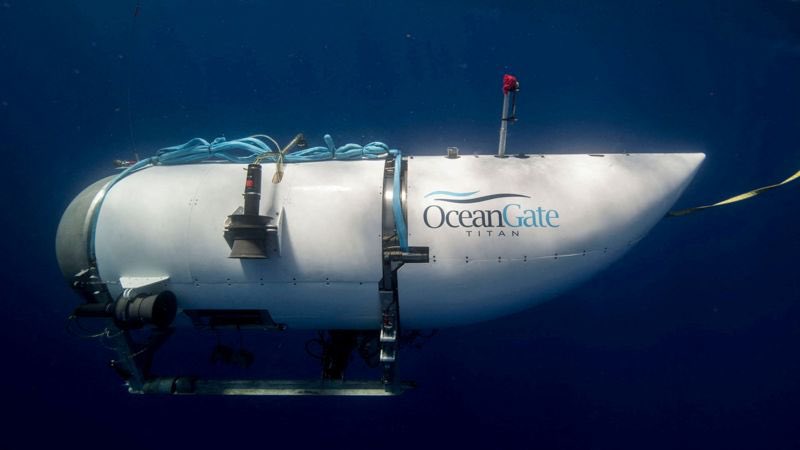If the Titan submarine is underwater and intact, available oxygen will run out this Thursday morning (22). (Photo: reproduction)
More recent information, released by North American vehicles, on the submarine missing since Sunday (18) revealed that the former commander of the US Navy nuclear submarine, David Marquet, warned that the sounds and signals of hope detected repeatedly over the past few hours may not be coming from the Titan submersible.
“I don’t think the noise is theirs, it could just be natural sounds. We hear noises and more ships are coming into the area and then we hear more noises, and I don’t think that’s a coincidence,” he told the BBC on Wednesday night.
The information comes in the form of bad news, as the US Coast Guard has predicted that the missing submarine’s oxygen supply will expire this Thursday morning (22). In other words, if the ship is submerged, intact and with survivors, they will not be able to breathe and can be presumed dead because of it.
[esi ads local=”intext-b”]The Coast Guard also told media it was using remotely operated vehicles to conduct underwater searches near where Canadian planes recorded the noises earlier this week. Despite this, no trace of the Titan or any of its five occupants has yet been found.
Coast Guard Capt. Jamie Frederick said the noise analysis was “inconclusive”. “When you’re in the middle of a search and rescue case, you always have hope. […] As for the noises specifically, we don’t know what they are, to be honest with you,” he said.
With this, the chances of survival for the five passengers aboard the missing submarine become extremely low. Therefore, one of the only, if not the only, way for the Titan submersible to be rescued with the passengers alive, was with equipment called the Flyaway Deep Ocean Salvage System (FADOSS) which can salvage objects or vessels. at the bottom of the ocean up to 6,000 meters deep.
[esi ads local=”intext-c”]This is more than enough to reach the area of the sunken Titanic, which is at 3,800 meters. But before the system could be used, the submersible would have to be identified, so the tool would be welded to a ship’s deck and lowered for rescue. That is, it would last at least 24 hours of uninterrupted operation.
Former US Navy diver Bobbie Scholley, however, said there was still reason for hope despite early reports that oxygen aboard the Titan would run out early Thursday. “Everyone is focusing on the 96 hour life sustaining window that they give the crew but it’s not a hard and fast number and I know the search teams aren’t focusing about being a fixed and fast number.” , guaranteed.
Meanwhile, teams from the United States, Canada and France used planes and ships to search nearly 26,000 square kilometers of high seas, about five times the size of Brazil’s Federal District.
[esi ads local=”intext-d”]Read also: Hundreds of people missing after the sinking of a ship in the Mediterranean
Learn more about: World
Carlos Nathan Sampaio

Journalist graduated from the Federal University of Mato Grosso (UFMT) in 2013, specialist in Digital Media Strategies from the Higher and Higher Institute of Goiânia – IPOG, graduate in Corporate Communication from Senac and specialist in SEO.

“Prone to fits of apathy. Beer evangelist. Incurable coffeeaholic. Internet expert.”







